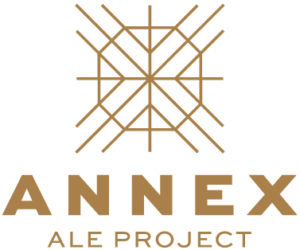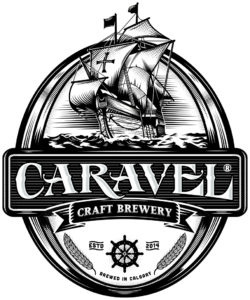 Over the past couple weeks two new breweries opened their doors in Alberta, Annex Ale Project (read profile here) and Caravel Brewing (profile here), both in Calgary. Their official arrivals makes 44 independent brewing operations (51 total licenses – I discount multiple brewing locations and count Bear Hill brewpubs as one entity).
Over the past couple weeks two new breweries opened their doors in Alberta, Annex Ale Project (read profile here) and Caravel Brewing (profile here), both in Calgary. Their official arrivals makes 44 independent brewing operations (51 total licenses – I discount multiple brewing locations and count Bear Hill brewpubs as one entity).
In addition a check of the AGLC license application page reveals another three who have applied for a license – Citizen Brewing, O.T. Brewing and Revival Beercade. I have not had a chance to speak yet with any of the new applicants, so can’t speak to what they are up to.
But wait, I am not done. My running list of breweries-in-planning currently has 45 companies on it. The list, which I doubt is complete, covers every stage of the planning process. Some on the list are nothing more than a brewery name and a contact. At the other end are breweries well advanced in construction but not yet open for business, such as Folding Mountain and Siding 14. I also include contract breweries who have ambitions of opening a brewery down the road. And everything in between. And, as I say, I doubt I have captured them all.
If all of the current list successfully open in the next year or two, Alberta will once again have doubled in size and will be pushing 100 breweries. This from a simple dozen a couple years ago.
I have discussed the reasons why before. The triad of eliminating production minimums, growing consumer awareness of both local food and craft beer, and more recently the favourable mark-up regime have created market space for Alberta breweries.
The question on my mind today is: where will it stop? What is the saturation point for Alberta? Obviously no one can answer that conclusively as the market is very dynamic right now and still in a steep growth phase. But we can develop some insights by looking at our neighbours. I haven’t done a per capita comparison recently, but hope to in the coming weeks, but I am still keeping up on breweries across the country.
 B.C. currently has 131 breweries and brewpubs (contract breweries excluded). They had a big explosion of new breweries a couple years back but more recently the pace of growth has slowed. Ontario has over 220 currently and is experiencing a new flash of openings. They give us some sense of what is possible. Alberta is closing in on B.C. in terms of population (4.2 million vs. 4.7 million), while Ontario remains three times larger.
B.C. currently has 131 breweries and brewpubs (contract breweries excluded). They had a big explosion of new breweries a couple years back but more recently the pace of growth has slowed. Ontario has over 220 currently and is experiencing a new flash of openings. They give us some sense of what is possible. Alberta is closing in on B.C. in terms of population (4.2 million vs. 4.7 million), while Ontario remains three times larger.
Which suggests 100 to 150 breweries in Alberta over the medium term is sustainable, especially if they continue to be a mix of full production breweries and smaller locally-oriented operations. That is not to say every brewery that opens will succeed – the market will still pick winners and losers based upon quality, marketing acumen and access to cash flow.
Having 150 breweries in the province, however, will permanently alter the nature of the industry. Until know it has been close-knit and rather cooperative and friendly. Partly that is the nature of craft beer. But I do expect things to become more competitive. A crowded room inevitably leads to more bumping of elbows. That will be a challenge for the industry and, in particular, the Alberta Small Brewers Association.
I am careful not to make bold predictions around the growth of craft beer in Canada – five years ago who would have said Alberta would have 50 breweries? – but I do expect the beer boom to continue in the province for the next couple of years. I fully anticipate seeing one or two breweries opening a month for the foreseeable future. A cooling off period will follow, but we are not there yet, friends.
Which makes my job of providing profiles and the like to you ever more challenging. I do hope to get to a few more in the coming weeks. For now, keep enjoying all those new breweries.


May 26, 2017 at 3:42 PM
There was a time that I had tasted every regular offering from an Alberta Brewery. Not so much anymore.
May 26, 2017 at 3:50 PM
I can’t keep up and neither can my liver and wallet. Jeeeze eh.